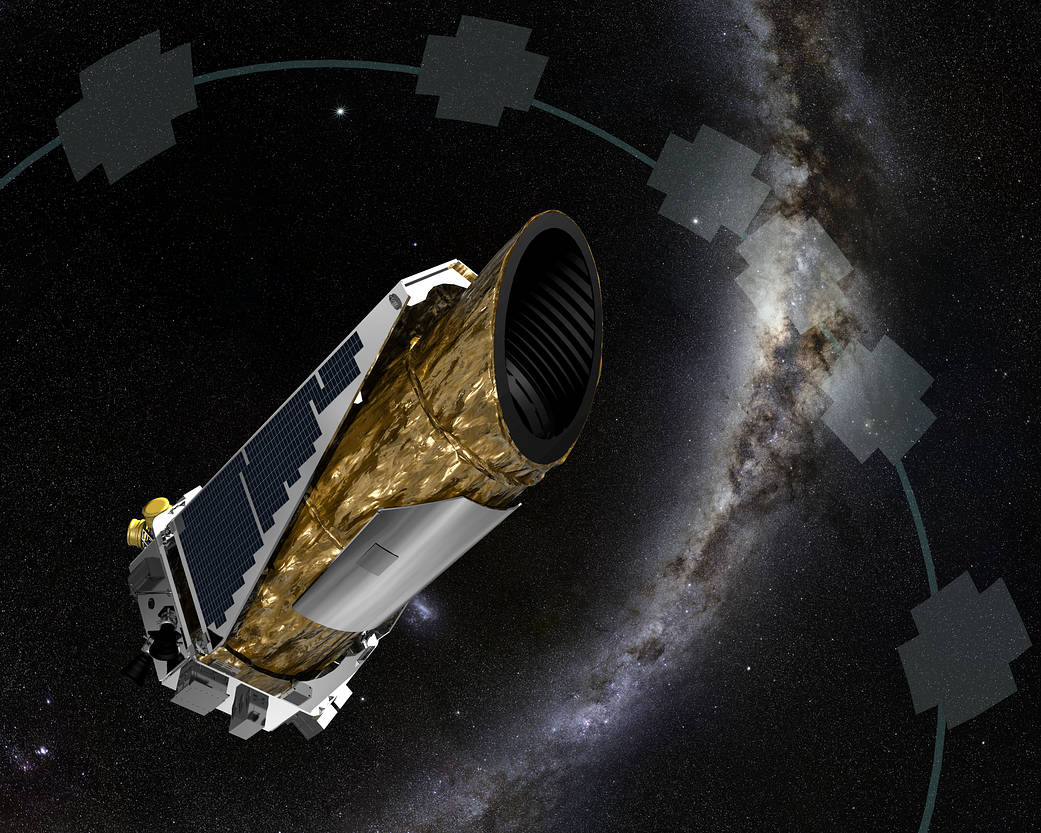The artistic impression shows NASA’s planet-hunting Kepler spacecraft operating in a new mission profile called K2. In May the spacecraft began its new mission observing in the ecliptic plane, the orbital path of Earth around the sun, depicted by the grey-blue line marked by opaque cross-like shapes. Each shape represents the field-of-view of an observing campaign.
The K2 mission observes a specific portion of the distant sky for approximately 80 days, until it is necessary to rotate the spacecraft to prevent sunlight from entering the telescope. The spacecraft orbits the sun every 372 days as it trails Earth, allowing for four full campaigns per orbit or year. The arching band of stars is the plane of the Milky Way Galaxy.
Using publicly available data collected by the spacecraft in February 2014 during the performance concept test to prove K2 would work, astronomers have confirmed the first exoplanet detected by the K2 mission. The newly confirmed planet, HIP 116454b, is 2.5 times the diameter of Earth, and closely orbits a star smaller and cooler than our sun once every nine days, making the planet too hot for life as we know it. The star and planet are 180 light-years from Earth toward the constellation Pisces.
In May 2013, data collection for Kepler’s extended prime mission came to an end when the second of four reaction wheels used to stabilize the spacecraft failed. Without at least three functioning reaction wheels, Kepler couldn’t be pointed at the original field with sufficient stability to precisely measure the dimming of starlight caused by a planet when it passes or transits in front of a distant star.
Rather than giving up on the stalwart spacecraft, a team of scientists and engineers crafted a resourceful strategy to use pressure from sunlight as a virtual reaction wheel to help control the spacecraft while observing the sky in the ecliptic plane. The resulting K2 mission promises to not only continue Kepler’s planet hunt, but to expand that search to bright nearby stars which harbor planets that allow scientists to study them in detail to better understand their composition. K2 will also introduce new opportunities to observe star clusters, active galaxies, and supernovae.
Link to full NASA press release: NASA’s Kepler Reborn, Makes First Exoplanet Find of New MissionCredit: NASA Ames/JPL-Caltech/T Pyle



























